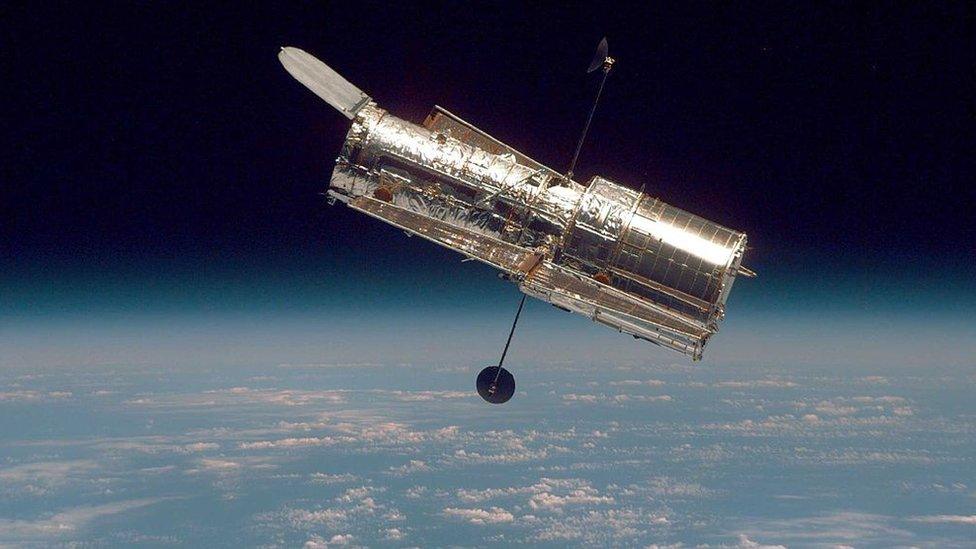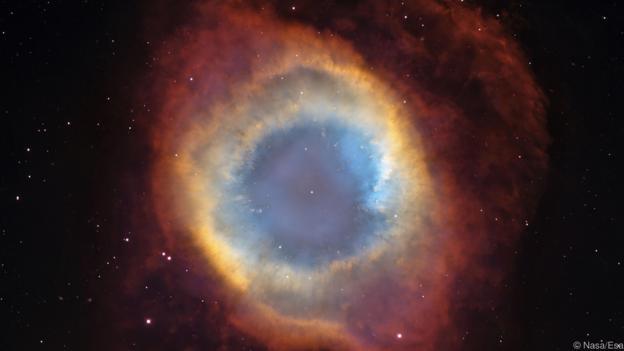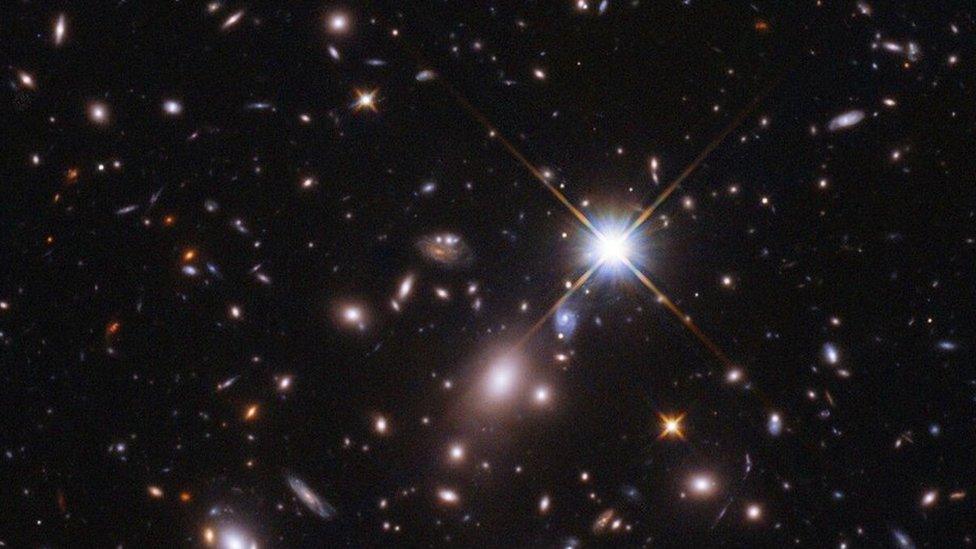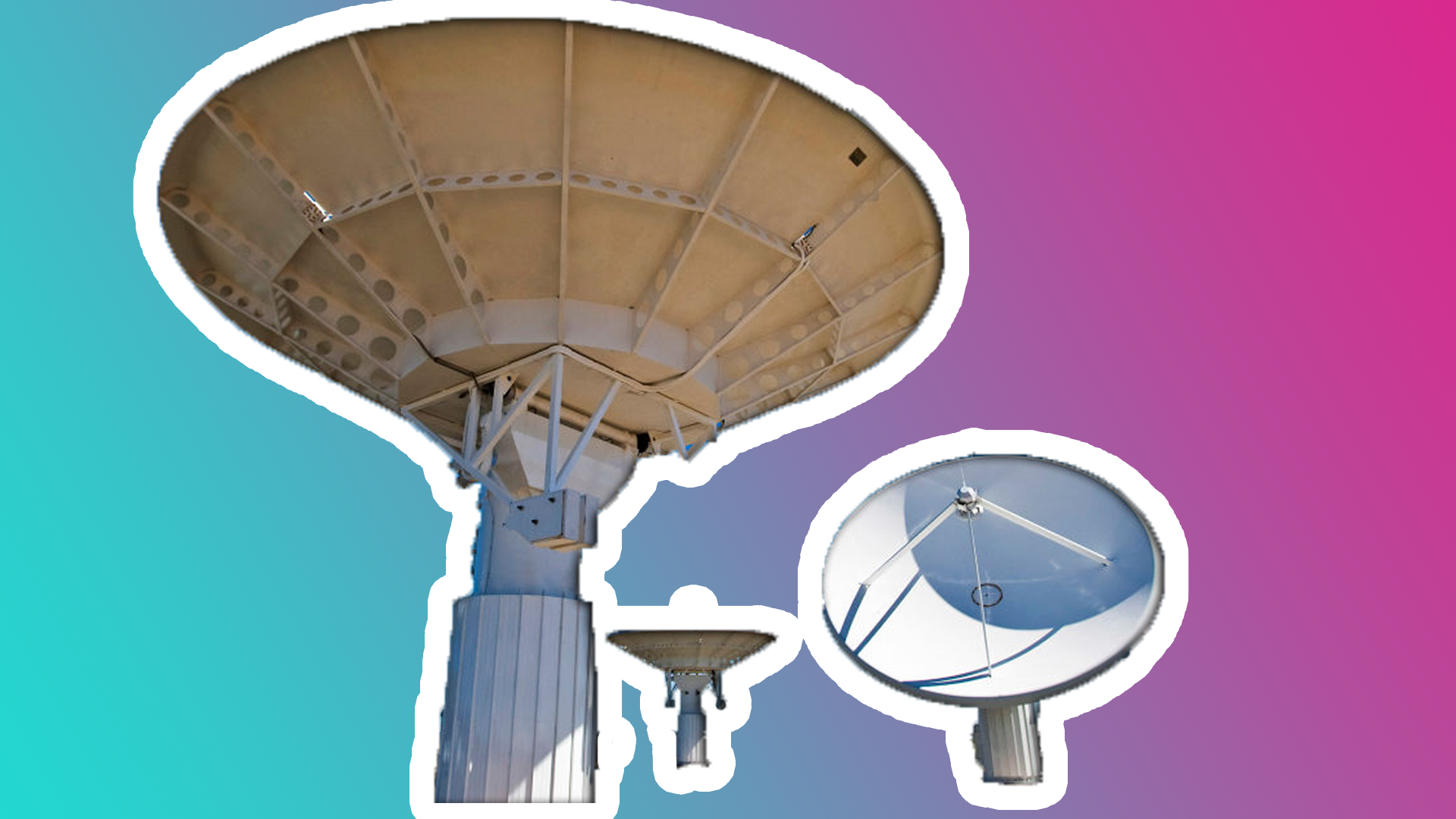Hubble Space Telescope: Image shows some of the most distant galaxies in the universe
- Published
- comments

An image of the distant galaxy cluster Abell 1351 taken by the Hubble Space Telescope
A new image from the Hubble Space Telescope shows some of the most distant galaxies in the universe.
The picture, taken with Hubble's wide field camera, shows the galaxy cluster Abell 1351, which can be found 4 billion lights years away in the constellation Ursa Major.
The cluster contains lots of galaxies of different ages, shapes and sizes.
NASA defines a galaxy as "a huge collection of gas, dust, and billions of stars and their solar systems, all held together by gravity."
The galaxy we live in is called the Milky Way. When you look up into the sky, all the stars and planets you can see also live with us in our galaxy.
Space scientist Dr Maggie Aderin-Pocock tells us why the Hubble Space Telescope is so important (2020)
In this new telescope image, the huge galaxy cluster shines - showing thousands of galaxies held together by gravity.
Almost every object seen in the image of Abell 1351 is a galaxy, including the different streaks of light - they are galaxies whose light has been stretched through a process known as gravitational lensing.
According to Nasa, a gravitational lens can occur when a huge amount of matter, like a cluster of galaxies, creates a gravitational field that distorts and magnifies the light from distant galaxies that are behind it but in the same line of sight. The effect is like looking through a giant magnifying glass.
It allows researchers to study the details of early galaxies too far away to be seen with current technology and telescopes.
Images like this one of Abell 1351, and other galaxy clusters, taken by Hubble help astronomers to understand galaxies and the universe better.

The Hubble Space Telescope
Hubble Space Telescope was launched 24 April 1990, and is one of Nasa's most important research tools.
The aim of the telescope is to send back incredible images which helps scientists under the universe better.
Over it's 32 years of floating above our heads, the Hubble has discovered that black holes exist, proven space isn't empty, and helped to find new planets.
Hubble orbits the Earth about 340 miles (547km) above us
It was named after famous astronomer Edwin Powell Hubble
Hubble helped us to learn more about our own planets! It gave us our first proper look at Neptune and Pluto
- Published20 May 2020

- Published3 April 2022

- Published17 December 2019

